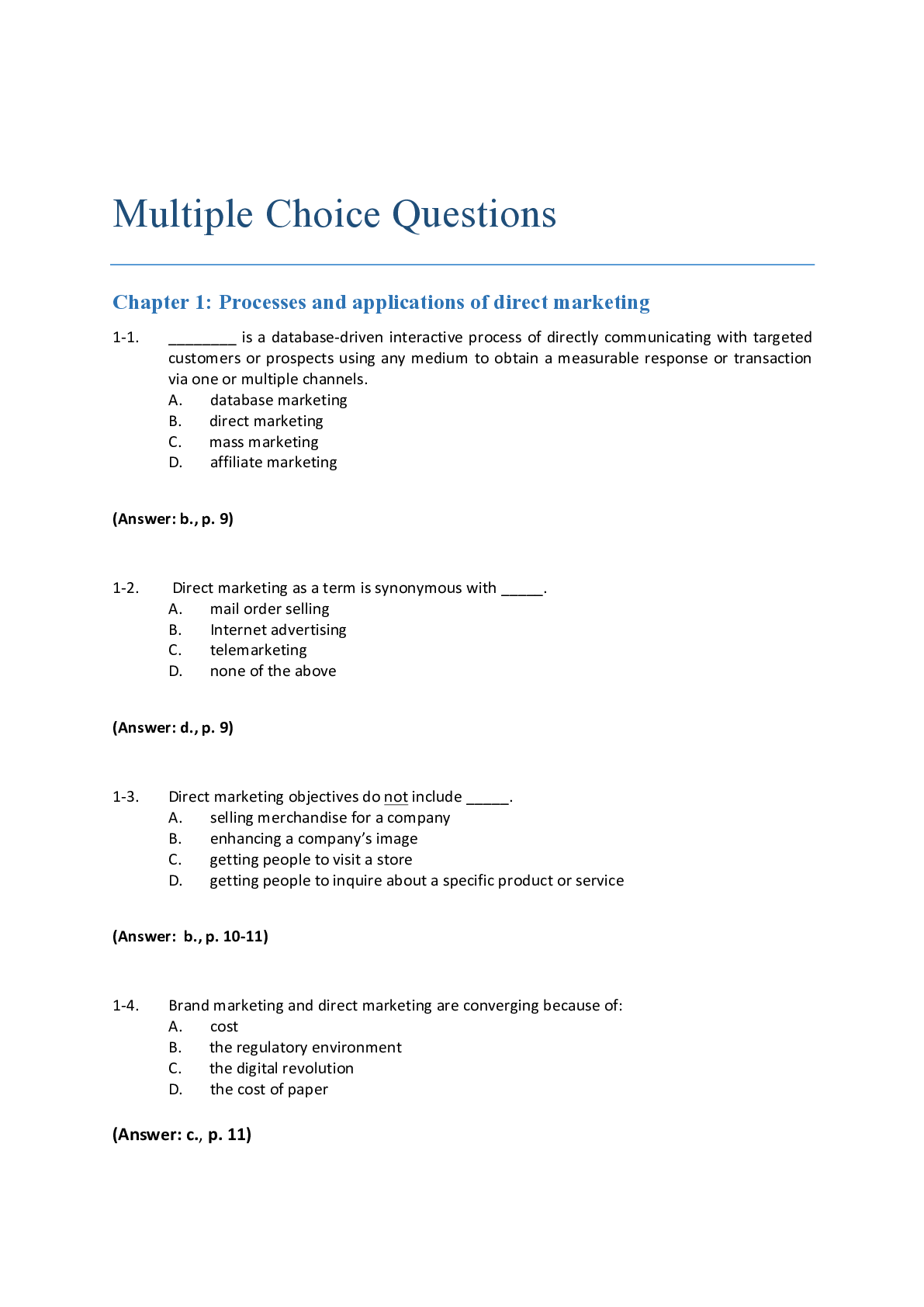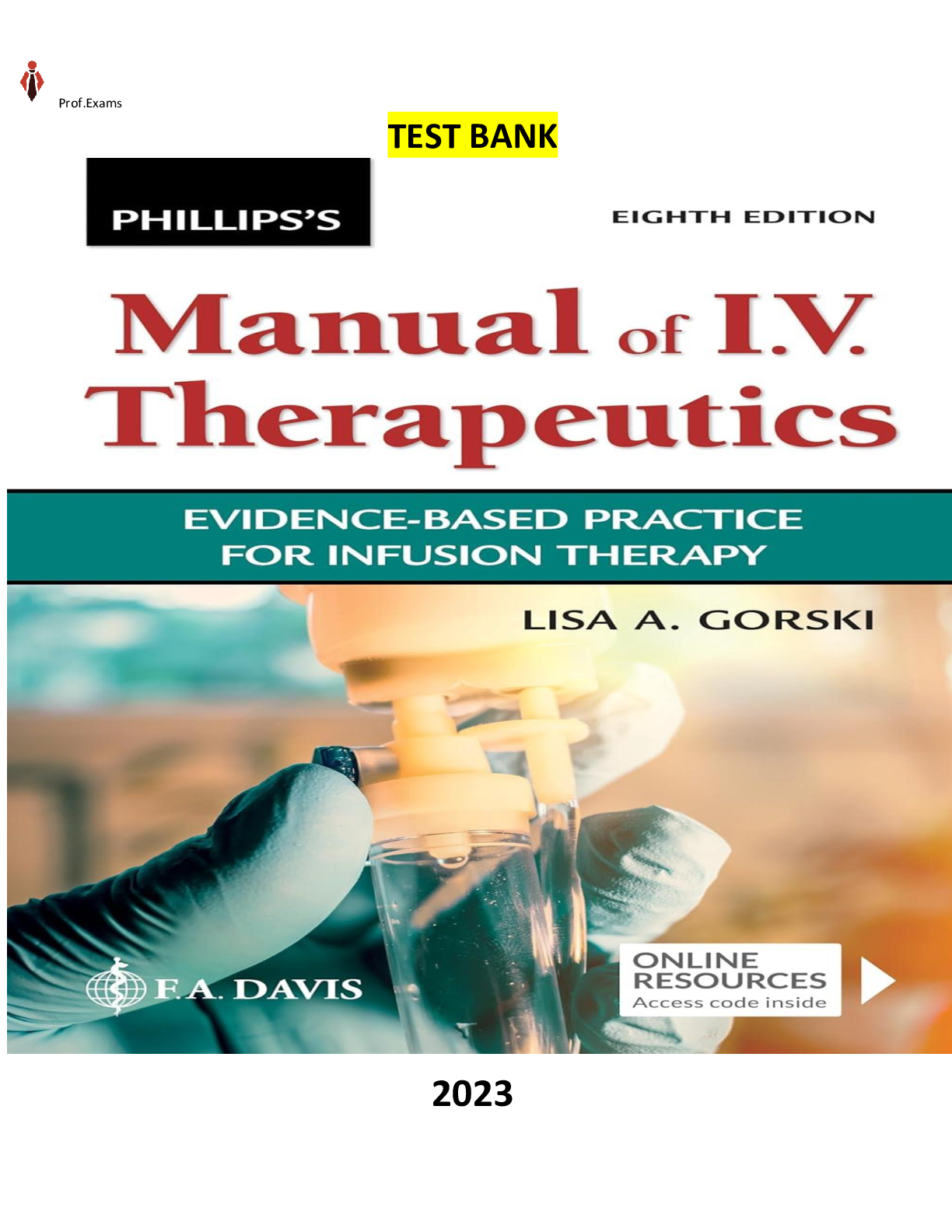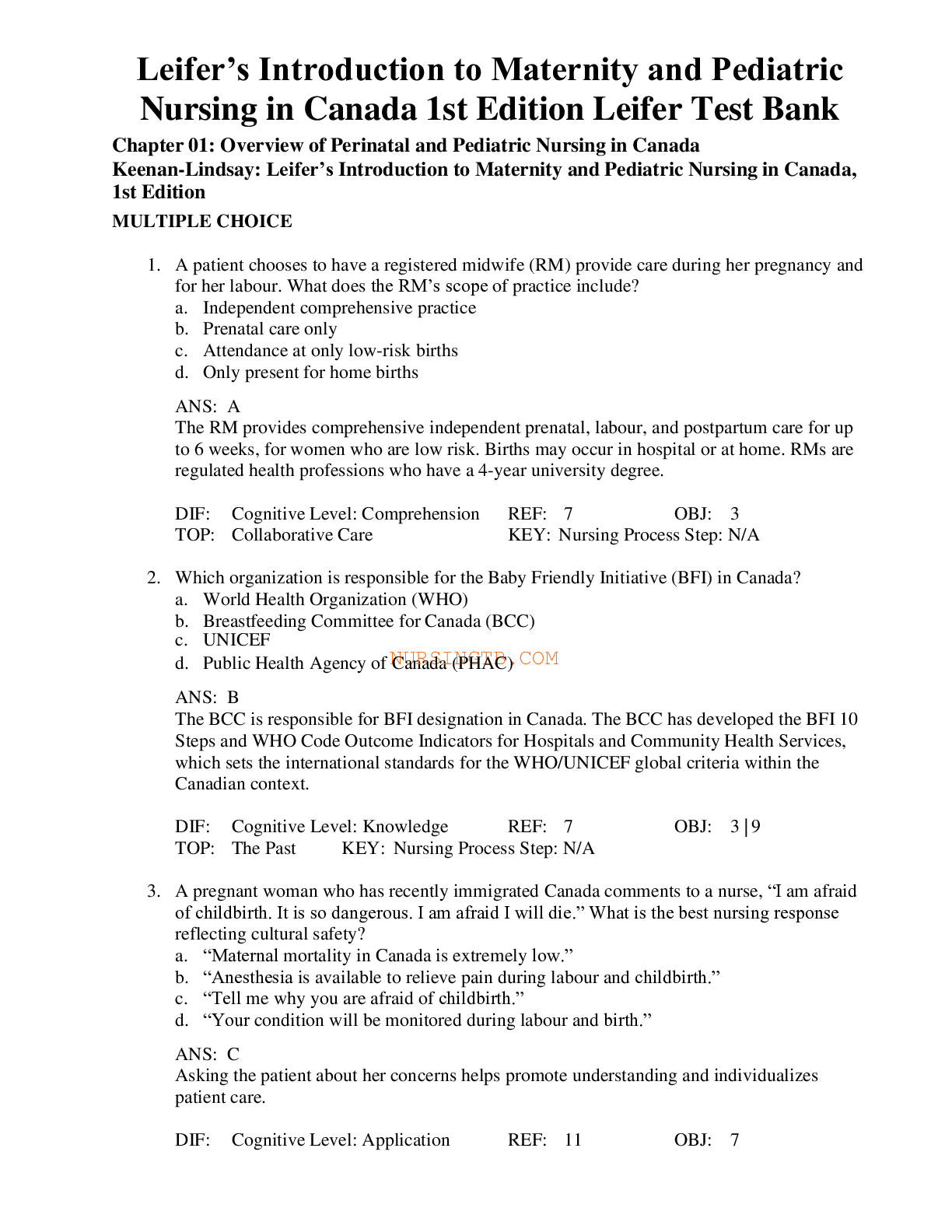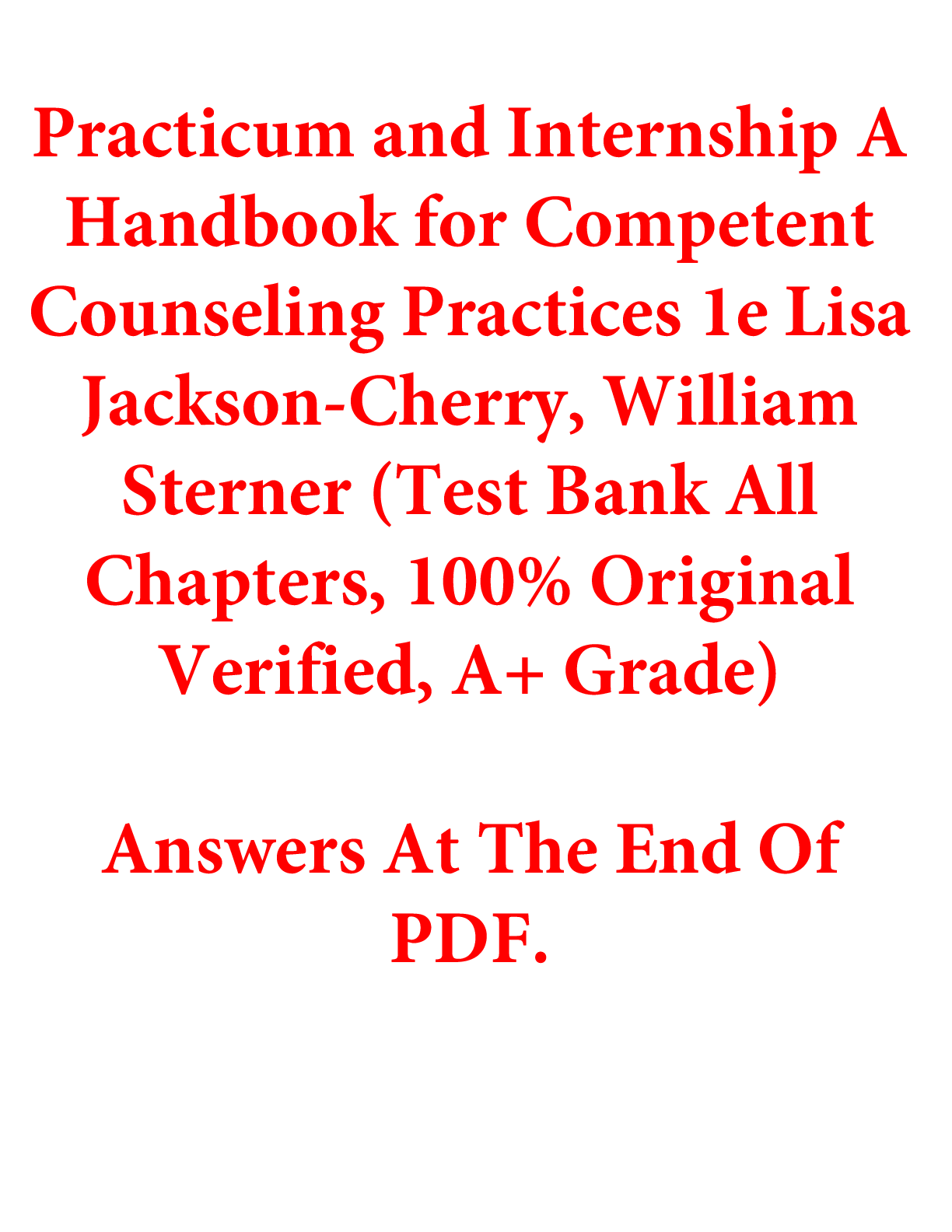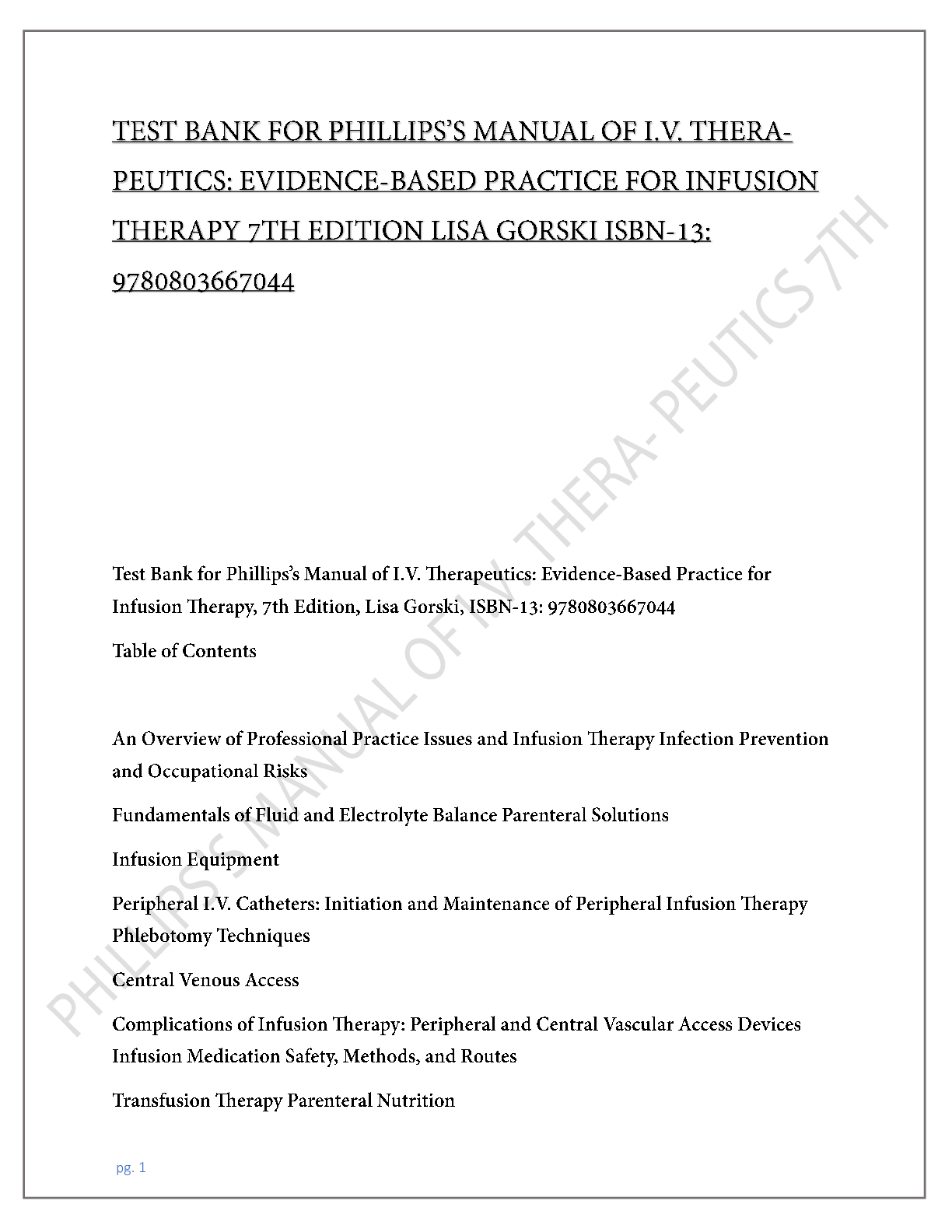Education > TEST BANKS > Test Bank For Crisis Assessment, Intervention, and Prevention,4th Edition by Lisa Jackson-Cherry Bra (All)
Test Bank For Crisis Assessment, Intervention, and Prevention,4th Edition by Lisa Jackson-Cherry Bradley T. Erford
Document Content and Description Below
Test Bank For Crisis Assessment, Intervention, and Prevention,4th Edition by Lisa Jackson-Cherry Bradley T. Erford-The experience of an event may or may not impact the individual to the degree where i... t is categorized as a crisis. Using the trilogy definition for crisis, what elements are needed for an event to be considered a crisis? 1. Perception of the event, adverse childhood reactions, and level of functioning is impacted 2. Perception of the event, exceeds resources, and level of functioning is impacted [correct] 3. Perception of the event, socioeconomic status, and exceeds resources 4. Perception of an event, exceeds resources, and disability status [Feedback for Answer Choice 1] Although adverse childhood reactions is a variable to address with a client to determine coping skills, resources, and experiences, this is not part of the trilogy of the definition of crises. [Feedback for Correct Answer 2] Individuals differ in how they experience situations/events. Multiple persons may experience the same situation but respond differently. The perception of the event as a crisis is connected to one’s available resources and coping skills. A person who experiences the event as a crisis will often have fewer resources or coping skills to work through a crisis. When this occurs, the individual’s perception of the crisis may cause some dysfunction in their life. [Feedback for Answer Choice 3] Although socioeconomic status may impact the resources that may be available to an individual to address a situation, this is not part of the trilogy of the definition of a crisis. [Feedback for Answer Choice 4] Although disability status may be a component for some who perceive a situation as a crisis, disability status in itself is not a constant variable correlated with the trilogy of the definition of a crisis. [Q2] Which of the following is a common and effective technique used in assessing and measuring stress, monitoring increases and decreases in stress (as well as just about any other symptom or variable such as depression, sadness, anger, and so on), or assessing a baseline of functioning? 1. Scaling [correct] 2. Resilience 3. Adaption 4. Traumatic event [Feedback for Correct Answer 1] Scaling is a common and effective technique used in assessing stress, monitoring increases and decreases in stress (as well as just about any other symptom or variable such as depression, sadness, anger, and so on), or assessing a baseline of functioning. [Feedback for Answer Choice 2] Resilience may be defined as the dynamics that contribute to positive adaptation following exposure to experiences that have the potential to disrupt functioning. It is not measured. [Feedback for Answer Choice 3] Although adaptation is an outcome of stress or crisis over an extended period and may be measured by the fit between the individual or family system and the environment, it is not the technique to measure stress. [Feedback for Answer Choice 4] A traumatic event involves threatened or actual death or serious injury, or a threat to the well-being of oneself or to another person. It is not measured. Learning Objective 1.2: Compare crisis intervention and traditional counseling. [Q1] Although there are many elements that are similar across both crisis counseling and traditional counseling, it is imperative to understand the differences in order for crisis intervention to be effective. Which of the following is the main difference in the overall goal between crisis intervention and traditional counseling? 1. Crisis intervention focuses on safety and stabilization whereas traditional counseling focuses on increasing functioning. [correct] 2. Crisis intervention often involves a team approach whereas traditional counseling involves the counselor. 3. Crisis intervention involves fewer sessions that vary in time whereas traditional counseling may have set timeframes. 4. Crisis intervention focuses on symptoms of distress whereas traditional counseling often involves diagnostic impressions. [Feedback for Correct Answer 1] Safety and stabilization are the main goals of crisis intervention. Working with clients over a longer period of time to increase their levels of functioning is often the goal of long-term counseling. [Feedback for Answer Choice 2] Although crisis intervention differs from traditional counseling since crisis work often includes interdisciplinary professionals and teams and traditional counseling often includes a professional relationship between the client and counselor, this is not the goal of crisis intervention. [Feedback for Answer Choice 3] Although crisis intervention includes fewer sessions than traditional counseling since crisis work often includes assessment and referral to long-term care, this is not the goal of crisis intervention. [Feedback for Answer Choice 4] Although crisis intervention differs from traditional counseling in that crisis counselors will often report symptoms presented by the client and will not make a diagnosis of clients in crisis, this is not the goal of crisis intervention. [Q2] Which of the following approaches, which differs from crisis intervention, recognizes that crisis events may overwhelm an individual and manifest in certain symptomatology and assists an individual in restoring a sense of safety, power, and self-worth? 1. Trauma informed care [correct] 2. Directive approach 3. Nondirective approach 4. Collaborative approach [Feedback for Correct Answer 1] Trauma informed care (TIC) recognizes that crisis events may overwhelm an individual and manifest in certain symptomatology. TIC assists an individual in restoring a sense of safety, power, and self-worth. The six guiding principles of TIC include: (1) safety; (2) trustworthiness and transparency; (3) peer support and mutual help; (4) collaboration and mutuality; (5) empowerment, voice, and choice; and (6) cultural, historical, and gender issues. [Feedback for Answer Choice 2] Directive approaches allow the person in crisis to come up with the directives while the crisis counselor facilitates that process. Although this may be a component used in TIC in how to work with an individual in crisis, it is not a comprehensive approach aimed to assist an individual in restoring a sense of safety, power, and self-worth. [Feedback for Answer Choice 3] Nondirective approaches allow the person in crisis to come up with the directives while the crisis counselor facilitates that process. Although this may be a component used in TIC in how to work with an individual in crisis, it is not a comprehensive approach aimed to assist an individual in restoring a sense of safety, power, and self-worth. [Feedback for Answer Choice 4] A collaborative approach is a blend of directive and nondirective approaches. Although this may be a component used in TIC in how to work with an individual in crisis, it is not a comprehensive approach aimed to assist an individual in restoring a sense of safety, power, and self-worth. [Show More]
Last updated: 4 months ago
Preview 5 out of 305 pages

Loading document previews ...
Buy this document to get the full access instantly
Instant Download Access after purchase
Buy NowInstant download
We Accept:

Reviews( 0 )
$15.50
Can't find what you want? Try our AI powered Search
Document information
Connected school, study & course
About the document
Uploaded On
Feb 02, 2025
Number of pages
305
Written in
Additional information
This document has been written for:
Uploaded
Feb 02, 2025
Downloads
0
Views
16

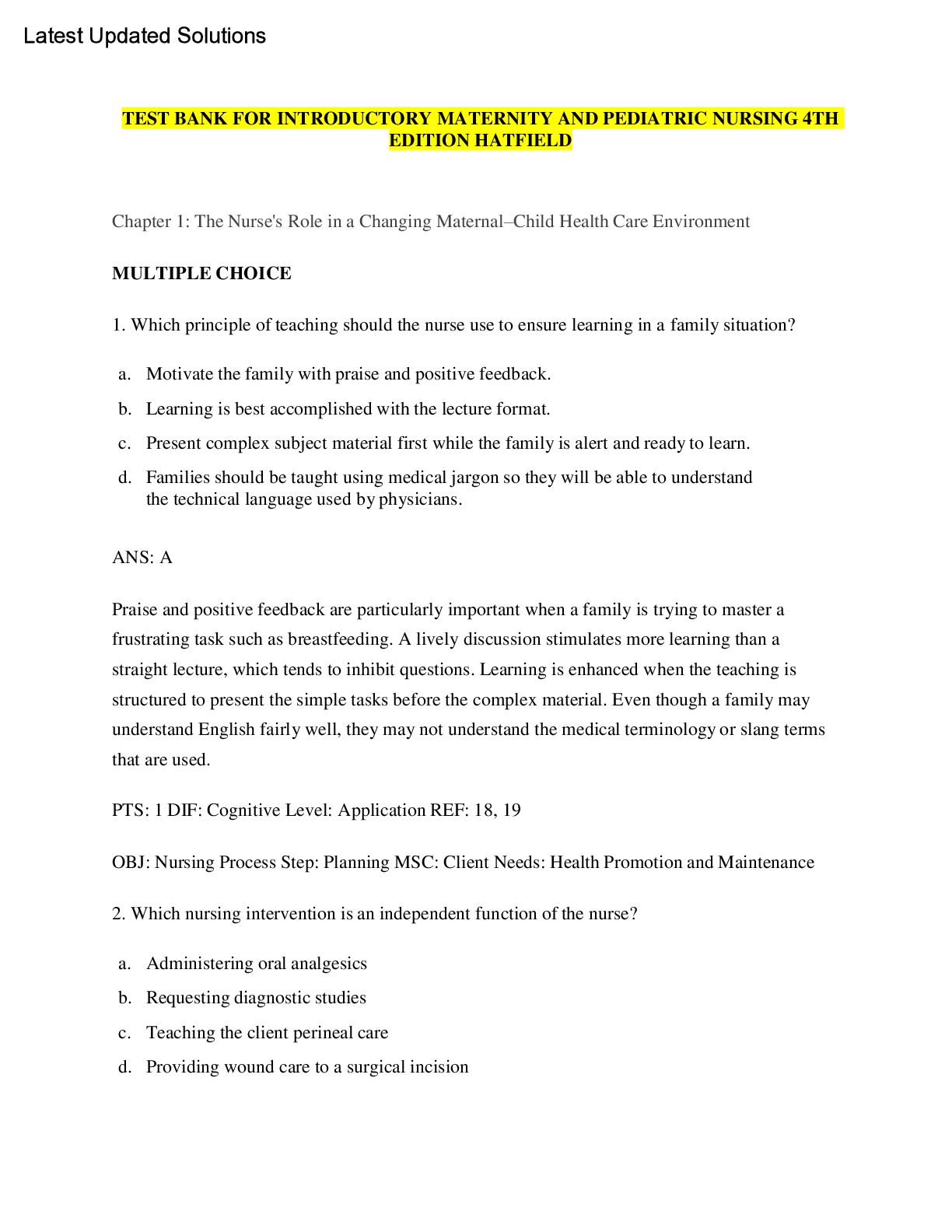
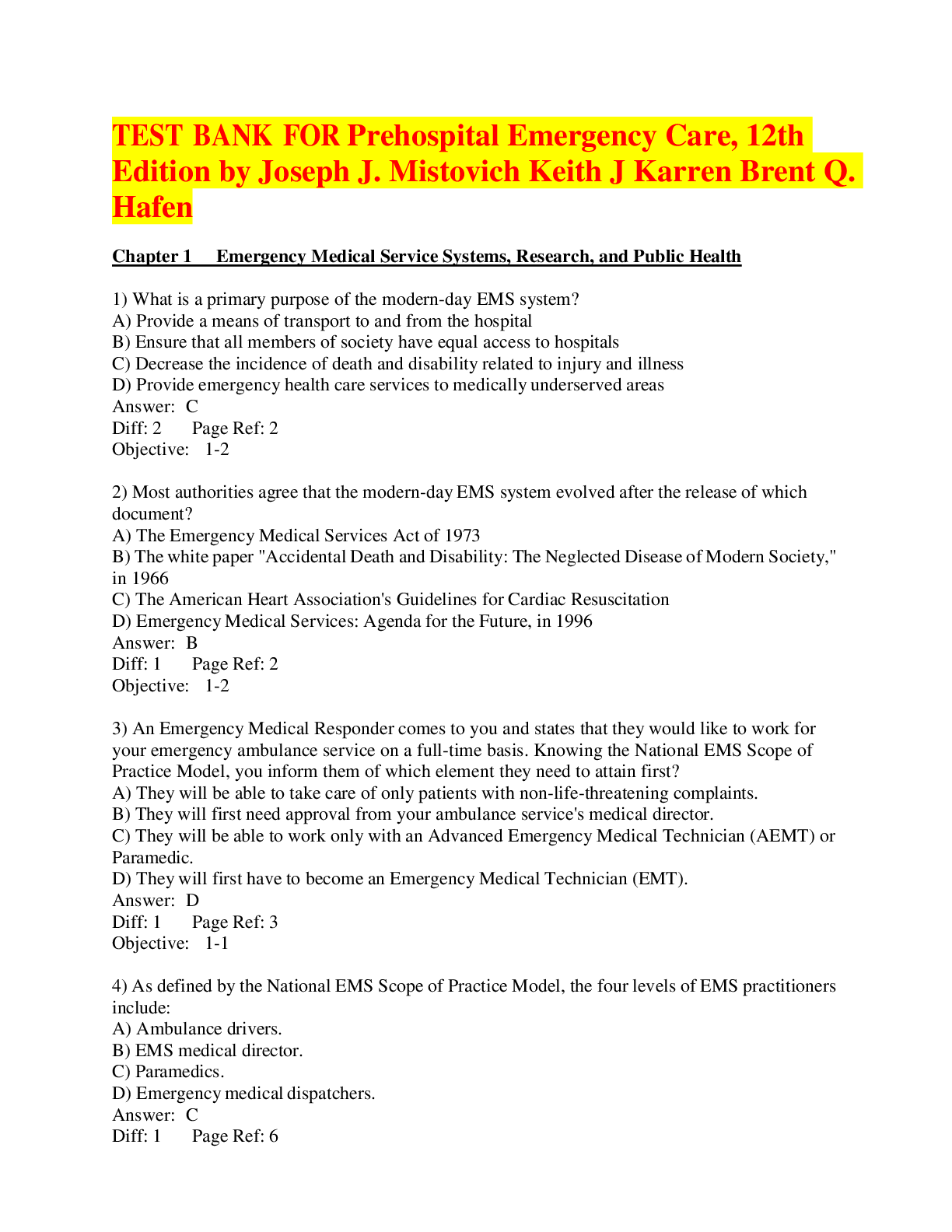


_compressed.png)
.png)
.png)


.png)


